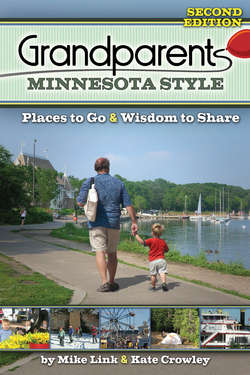Читать книгу Grandparents Minnesota Style - Mike Link - Страница 16
На сайте Литреса книга снята с продажи.
ОглавлениеHawk Ridge Bird Observatory
Some wonders are worth traveling any distance to behold, and the Hawk Ridge Bird Observatory offers one of those natural wonders. There aren’t many places a person can go to see thousands of animals in a short amount of time. Who would believe that it’s possible to do so here in Minnesota? Each autumn, kettles of hawks migrate directly over Hawk Ridge, above Duluth.
Hawk Ridge is the site of a natural event that every Minnesotan should see; doing so with a grandchild makes it all the more special. Some hawks tend to soar high in the air and can look like black specks against the clouds, but many others fly close enough that you don’t even need binoculars. Plenty of these winged creatures will only travel as far as Iowa or Missouri, but some will reach Central and South America.
Hawk migration begins in mid-August and lasts into mid-December, but the best viewing tends to be in mid-September when the largest concentrations of birds are seen. On a sunny day with a west or northwest wind, you may see tens of thousands of birds. (One September day in 2003 topped all previous records when 102,321 raptors were tallied.)
You and your grandchild are likely to encounter up to seventeen species of hawks. Fourteen are seen regularly, while the other three are found less often. Broad-winged Hawks and Sharp-shinned Hawks rank as the most common.
Bring binoculars and beverages with you, since there are no services atop the ridge. Join the other spectators along the edge of the dirt road near the counting station, and note the displays set up by Friends of Hawk Ridge—a non-profit group that helps maintain and support the ridge’s programs and research. A naturalist is also on hand every day, to answer questions and to introduce folks to some of the hawks.
Be sure to pay attention to the smaller fliers in the area too. Since this is a nature reserve there is an abundance of shrubs and trees, which are often filled with songbirds on their way south. You may also be surprised to find dragonflies, mostly blue and green darners, drifting and zigzagging overhead. They too migrate along the ridge.
Bonding and bridging:
Where are those hawks going? That’s a question that will likely be on your grandchild’s mind. At Hawk Ridge Bird Observatory, it’s easy to day-dream about far off places. Your grandchild sees the hawks flying overhead, and he can imagine them soaring to entirely different continents.
This is a chance to help foster your grandchild’s curiosity about the world. Encourage his eagerness to explore. Ask questions like, “If you could go anywhere, where would it be?” After all, a healthy appetite for visiting new and distant places is key to becoming a well-rounded adult. There’s no better way to learn about different places and cultures than by visiting them.
A word to the wise:
Watch for the excitement when a live bird is brought to the counting area from the bird banders. The educators do live bird education demos and have volunteers from the crowd help with the release. So there is the chance that a lucky visitor may have an opportunity to help release a bird (passerine or raptor).
Age of grandchild: 6 and up
Best season: Autumn (September)
Contact: Hawk Ridge Bird Observatory, PO Box 3006, Duluth, MN 55803 • (218) 428-6209 • education@hawkridge.org • www.hawkridge.org
Also check out:
Winter Eagle Concentrations on the Mississippi River with the National Eagle Center, Wabasha; (651) 565-4989 or (877) 332-4537
Winter Trumpeter Swans Concentration on the Mississippi River, Monticello; (763) 295-2700 (Monticello Area Chamber of Commerce); www.monticellochamber.com/Swans.cfm
Grandchildren are God’s way of compensating us for growing old. MARY H. WALDRIP
